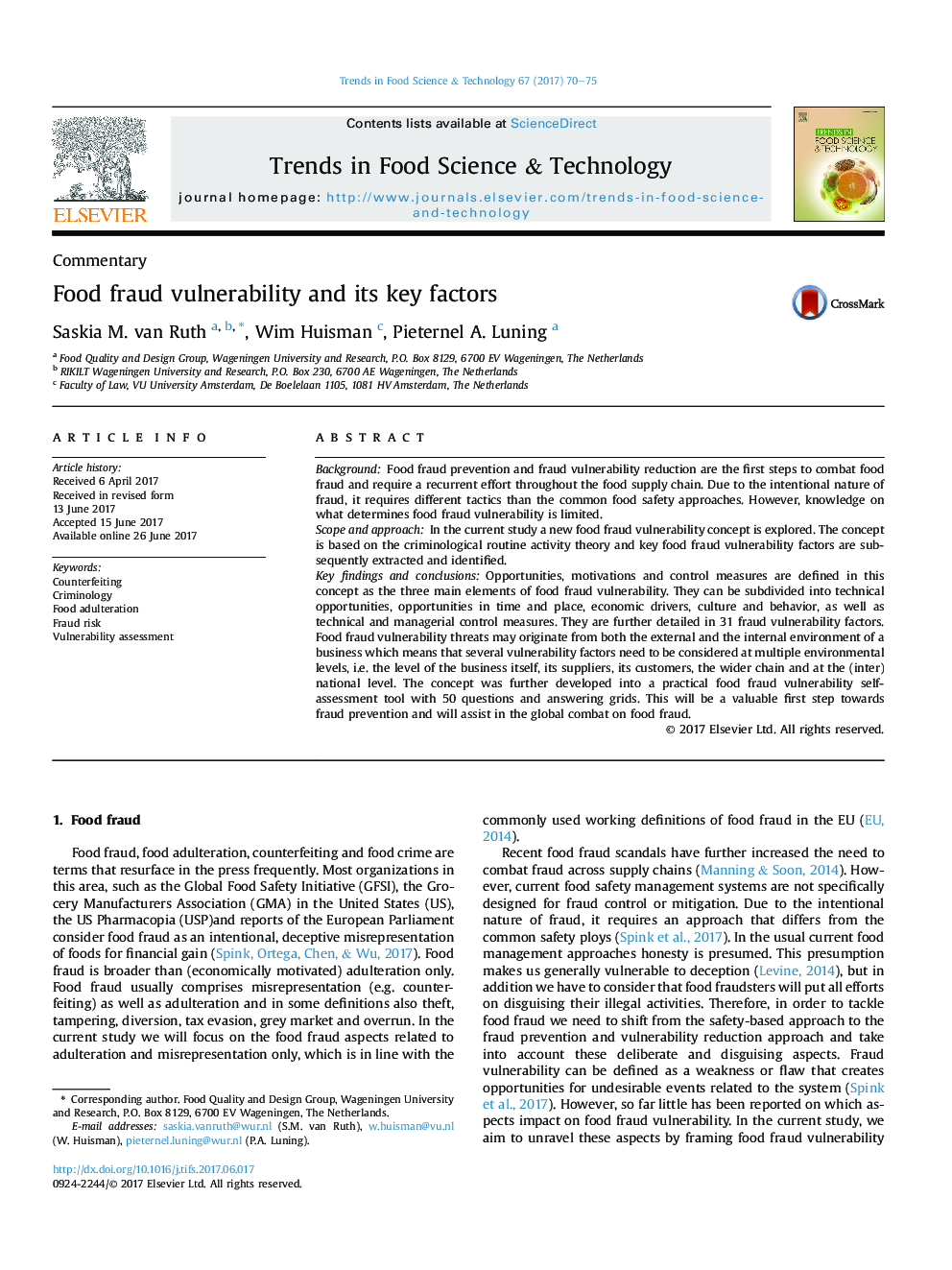| Article ID | Journal | Published Year | Pages | File Type |
|---|---|---|---|---|
| 5523613 | Trends in Food Science & Technology | 2017 | 6 Pages |
â¢Fraud vulnerability is defined by opportunities, motivations, and control measures.â¢Economic drivers and cultural/behavioral factors contribute to motivations.â¢Control measures need to consist of both technical and managerial measures.â¢A vulnerability assessment is a valuable first step towards fraud prevention.
BackgroundFood fraud prevention and fraud vulnerability reduction are the first steps to combat food fraud and require a recurrent effort throughout the food supply chain. Due to the intentional nature of fraud, it requires different tactics than the common food safety approaches. However, knowledge on what determines food fraud vulnerability is limited.Scope and approachIn the current study a new food fraud vulnerability concept is explored. The concept is based on the criminological routine activity theory and key food fraud vulnerability factors are subsequently extracted and identified.Key findings and conclusionsOpportunities, motivations and control measures are defined in this concept as the three main elements of food fraud vulnerability. They can be subdivided into technical opportunities, opportunities in time and place, economic drivers, culture and behavior, as well as technical and managerial control measures. They are further detailed in 31 fraud vulnerability factors. Food fraud vulnerability threats may originate from both the external and the internal environment of a business which means that several vulnerability factors need to be considered at multiple environmental levels, i.e. the level of the business itself, its suppliers, its customers, the wider chain and at the (inter)national level. The concept was further developed into a practical food fraud vulnerability self-assessment tool with 50 questions and answering grids. This will be a valuable first step towards fraud prevention and will assist in the global combat on food fraud.
